Tuesday, May 31, 2011
Sunday, May 29, 2011
German Keyboards
So you all know I have a job at DIL, more on that later, but what you may not know is that it's a desk job and I spend eight and a half hours each day sitting in front of my computer (I just got mine, more on that later). Normally, this would be inconsequential--I have a long association with computers and, though I don't know much in the way of programing, I'm pretty good and I continually make efforts to learn more [Minecraft has actually been a minor course in the technicals of how computer filing works, I have to manually place the texture packs into the proper folder {took me forever to figure out *windows button + R* and search appdata}]--but in this case it amounts to something because I have to use a German Keyboard.
What did I just show you a picture of? This is what I have to deal with every day. At first glance it actually looks normal, the F and J are in the right places so you don't have to alter your hand positions or think too much about where things are on the keyboard. But, before you say anything, do me a favor--look down at your keyboard, and back at the picture. Notice the "y" and "z" positions are reversed. Just those two. Zou have no idea how annozingz this can be.
That being said, I submit my further observations on the design. The "up arrow" key can be correctly inferred from relative position to be the "Shift" key. "Down arrow" is similarly "Caps Lock." "Strg" is "CTRL," there are some extra letters you don't use, but they're not in the way (and end up being downright convenient when you have to type "Quakenbrück"). The ' key is aggravatingly hidden behind the #, whether you can see that from this image or not.
But the only thing you might really be confused about is something called "Alt Gr." Notice the upper row, with the numbers. There are three symbols per key. The "Alt Gr" is a kind of 'second shift' key, that lets you stack numbers and letters in groups of three--actually a good idea if you desperately want to fit all the German letters and symbols onto an American style keyboard. But it makes hunting down "[" "(" and "@" very difficult.
I don't know how many 'alternate shift' keys you'd need to fix this,
Thursday, May 26, 2011
The Big Island, Part Three: Mauna Kea and Kailua-Kona
Our third foray into the island took us across the waist of the Big Island along the Saddle Road. For many years this road was difficult to traverse by anything other than a 4X4, but recent upgrades have made this a very efficient road to travel in a rental car. We left Hilo early in the morning because we wanted to reach Mauna Kea, the highest Hawai’in mountain - an inactive volcano, ringed with observatories, at 13,796 feet - before the clouds obliterated the views and made driving difficult.

We climbed from sea level to the Onizuka Visitor Information Centre at 9200 feet in just under 2 hours.
On the way up we must have passed through several climate zones as the landscape changed from the lush gardens around the sea, into forests, old lava beds and undulating pastureland.

Until the last few miles there was very little feeling of climbing a great height as the slope of the land is very gradual. Just at the turn off to the Visitor Centre we could look back and see miles and miles of prairie-like grassland broken up with giant bouquets of lava rock, old volcanic cone heads, with scattered clusters of cattle.
The road up from the saddle was twisty, steep and narrow in places and I could feel my heart rate accelerating with the altitude. By the time we reached the centre (the farthest you can go without a 4X4), I was experiencing shortness of breath and a bit of nausea. Doug, with his fighter-pilot blood, felt fine.
The original Hawai’ins view Mauna Kea as sacred. They call it “the place between heaven and earth” and believe it is where their original god created humans. The volcanic goddess, Pele’s, sister, Poliahu, resides there and many rituals have taken place over the years. There is a little lake near the summit where the people have placed their baby’s umbilical cords to protect them as they grow. Royalty went to the top to commune with the gods. When you are there and feel the mountain air, there is no doubt in your mind it is a special place.
It was chilly up there and our light clothes were inappropriate. (In fact, it snows on occasion and locals flock up to slide and board when it happens.) We quickly scuttled to the info centre where we found displays explaining the various stellar observatories found at the top, as well as details about the geology, history, flora and fauna of the area. On certain nights, the centre offers star gazing through some pretty serious telescopes we saw put away for the day. There was also a little gift shop. We contented ourselves with watching a short film about the summit and observatories and browsing the displays. If we were more suitably dressed, we could have taken several short hikes around the centre and even taken a tour of the summit. However, once again, we were pressed for time, so opted to continue along to the western coast.
The Saddle Road on the western side of Mauna Kea is well paved, but very narrow and, in many places only a single lane, so we took our time descending. We were rewarded with spectacular views of the sun-dappled landscape far to the south and north where the land seems to just drop into the water.

We arrived at Kailua-Kona, but continued south along the coast highway as far as the village of Captain Cook to view the famous bay there and his monument. The area along here is very steep with houses and gardens literally precariously perched along the cliff sides.
On the coast we arrived at Kealakekua Bay State Historical Park thinking we could park the car and walk to the monument. Unfortunately, we could not figure out how to do it so, instead, took a quick look at the beautiful bay which was busy with many kayak outfitters.
Apparently there is good anchorage here, but it was hard to tell from the shore. I could see the monument in the distance and thought about the circumstances that had brought about the death of Cook.

Cook first arrived at the Big Island during the four-month Feast of Lono, god of agriculture, when all warlike activities were suspended. Consequently, the people were in a friendly and receptive mood. Some stories say the Hawai’ins thought Cook might actually BE the god Lono and, when you realize he was the first white man they had seen, combined with his otherworldly ships, it was no wonder. At any rate, they feted him, many gifts were exchanged, and the sailors had a field day with the women who would apparently sleep with them for nails (Cook had to make sure his ships weren’t torn apart by his over-eager men!).
After provisioning, Cook continued on his journey, but encountered a storm which brought down one of his ship's masts. He returned to the Big Island, but this time his reception was not as welcoming. As he repairs were made to his ship, relations with the locals went from bad to worse, culminating with the theft of one of the longboats. Cook conspired to hold the local chief aboard his ship until the boat was returned – a ploy he had used successfully several times before. Unfortunately it backfired and, as Cook was enticing the chief aboard the boat, there was a skirmish. In the scuffle, he shot one of the warriors which set off a rampage. Within minutes Cook and his escort were beaten and clubbed to death by the mob.
To say the least, everyone was horrified by what had happened. To make amends, the Hawai’ins wanted to give Cook a burial worthy of one of their kings. Unfortunately, that included carving up the body and placing the parts at various secret locations to keep away bad spirits. You can imagine what the British officers thought about that! They demanded his body back so they could give it a proper burial at sea and apparently, everyone had to compromise, because only parts of Cook could be recovered.
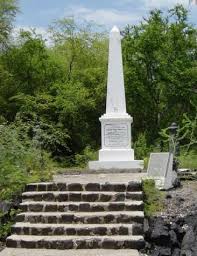
After all the morning’s adventures we were VERY hungry and thirsty and, lo and behold, our guidebook indicated there was a micro brewery with a restaurant in Kailua-Kona! If we could have flown there I don’t think we could have got to the Kona Brewing Company fast enough!
We had salad, shrimp toast and pizza along with Fire Rock Pale Ale for Doug and a Lavaman Red Ale for me. Wow!

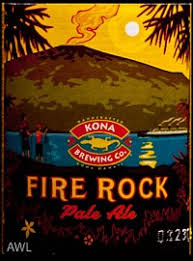
We sat out on a large patio surrounded by lush plant life.
The place was packed. As we left we stopped off at the growlie and bought a little brown jug of Castaway IPA to share with sailing friends later.
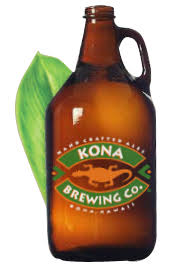

Later we drove along the Kona waterfront lined with cafes and restaurants. The place is geared to tourists and we saw many of them exploring the town and shoreline. Doug wanted to get to the marine store we heard was at the marina at Honokohau Harbour to buy some varnish and see what stock they had. We were disappointed to find there were few sailboat supplies as they mostly catered to fishing boats. We didn’t find what we were looking for but were, however, able to buy a Hawai’in flag courtesy flag. The marina itself is all stern tying and filled with fish boats. We only saw a handful of masts.
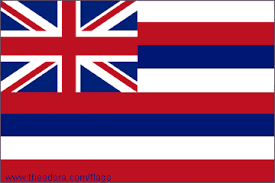

Summit of Mauna Kea looking south
We climbed from sea level to the Onizuka Visitor Information Centre at 9200 feet in just under 2 hours.
Visitor Centre
The original Hawai’ins view Mauna Kea as sacred. They call it “the place between heaven and earth” and believe it is where their original god created humans. The volcanic goddess, Pele’s, sister, Poliahu, resides there and many rituals have taken place over the years. There is a little lake near the summit where the people have placed their baby’s umbilical cords to protect them as they grow. Royalty went to the top to commune with the gods. When you are there and feel the mountain air, there is no doubt in your mind it is a special place.
It was chilly up there and our light clothes were inappropriate. (In fact, it snows on occasion and locals flock up to slide and board when it happens.) We quickly scuttled to the info centre where we found displays explaining the various stellar observatories found at the top, as well as details about the geology, history, flora and fauna of the area. On certain nights, the centre offers star gazing through some pretty serious telescopes we saw put away for the day. There was also a little gift shop. We contented ourselves with watching a short film about the summit and observatories and browsing the displays. If we were more suitably dressed, we could have taken several short hikes around the centre and even taken a tour of the summit. However, once again, we were pressed for time, so opted to continue along to the western coast.
The Saddle Road on the western side of Mauna Kea is well paved, but very narrow and, in many places only a single lane, so we took our time descending. We were rewarded with spectacular views of the sun-dappled landscape far to the south and north where the land seems to just drop into the water.
We arrived at Kailua-Kona, but continued south along the coast highway as far as the village of Captain Cook to view the famous bay there and his monument. The area along here is very steep with houses and gardens literally precariously perched along the cliff sides.
On the coast we arrived at Kealakekua Bay State Historical Park thinking we could park the car and walk to the monument. Unfortunately, we could not figure out how to do it so, instead, took a quick look at the beautiful bay which was busy with many kayak outfitters.
Captain Cook Monument across the bay
Apparently there is good anchorage here, but it was hard to tell from the shore. I could see the monument in the distance and thought about the circumstances that had brought about the death of Cook.
Captain James Cook
Cook first arrived at the Big Island during the four-month Feast of Lono, god of agriculture, when all warlike activities were suspended. Consequently, the people were in a friendly and receptive mood. Some stories say the Hawai’ins thought Cook might actually BE the god Lono and, when you realize he was the first white man they had seen, combined with his otherworldly ships, it was no wonder. At any rate, they feted him, many gifts were exchanged, and the sailors had a field day with the women who would apparently sleep with them for nails (Cook had to make sure his ships weren’t torn apart by his over-eager men!).
After provisioning, Cook continued on his journey, but encountered a storm which brought down one of his ship's masts. He returned to the Big Island, but this time his reception was not as welcoming. As he repairs were made to his ship, relations with the locals went from bad to worse, culminating with the theft of one of the longboats. Cook conspired to hold the local chief aboard his ship until the boat was returned – a ploy he had used successfully several times before. Unfortunately it backfired and, as Cook was enticing the chief aboard the boat, there was a skirmish. In the scuffle, he shot one of the warriors which set off a rampage. Within minutes Cook and his escort were beaten and clubbed to death by the mob.
To say the least, everyone was horrified by what had happened. To make amends, the Hawai’ins wanted to give Cook a burial worthy of one of their kings. Unfortunately, that included carving up the body and placing the parts at various secret locations to keep away bad spirits. You can imagine what the British officers thought about that! They demanded his body back so they could give it a proper burial at sea and apparently, everyone had to compromise, because only parts of Cook could be recovered.
What makes this story even more significant for me is that I had an ancestor who was on one of Cook's ships. Joseph Coleman, born in Surrey, England, in 1751, was signed aboard the Discovery in 1776. During the journey he became Quartermaster and attained the rank of Petty Officer. He was aboard when Cook was killed. Interestingly, George Vancouver and William Bligh were also present on that journey. I have my Dad to thank for this information. He wrote a novel based Joseph Coleman's adventurous life at sea, not only on Cook's voyages, but also aboard with Bligh during the infamous mutiny on the Bounty.
After all the morning’s adventures we were VERY hungry and thirsty and, lo and behold, our guidebook indicated there was a micro brewery with a restaurant in Kailua-Kona! If we could have flown there I don’t think we could have got to the Kona Brewing Company fast enough!
We had salad, shrimp toast and pizza along with Fire Rock Pale Ale for Doug and a Lavaman Red Ale for me. Wow!
On tap at the Kona Brewing Company
We sat out on a large patio surrounded by lush plant life.
An unfortunate name for beer thirsty sailors
Later we drove along the Kona waterfront lined with cafes and restaurants. The place is geared to tourists and we saw many of them exploring the town and shoreline. Doug wanted to get to the marine store we heard was at the marina at Honokohau Harbour to buy some varnish and see what stock they had. We were disappointed to find there were few sailboat supplies as they mostly catered to fishing boats. We didn’t find what we were looking for but were, however, able to buy a Hawai’in flag courtesy flag. The marina itself is all stern tying and filled with fish boats. We only saw a handful of masts.
Hawai'in Flag
It was getting late again and we still had to traverse the Saddle Road to get back to Ka’sala. We left the west coast at about 4pm and, as we headed back up the mountain, we were soon engulfed in the clouds and we had to pick our way along the narrow road watching out for invisible cows. :)
We burst into sunny skies at the highest point, then descended again into clouds and rain before finding our snug berth on Ka’sala again.
The Big Island, Part Two: Volcano!
We had read that there was an active volcano and we thought: Cool! Let’s go there! It seemed like a good idea, but as we got nearer to Hawai’I Volcanoes National Park we started having second thoughts. What are we doing visiting an ACTIVE volcano? One that could erupt at any time. One where the boiling magma was just a few hundred feet under the earth. The biggest one on the planet? Were we crazy? Then again, we had just crossed the Pacific in a 34 foot sailboat, and would do it again in a few weeks time, so perhaps we were nuts after all!

After paying $10.00 at the park gate we checked into the visitor centre.
There were several displays, numerous rangers answering questions and making suggestions, a small theatre looping four short films about the area and a gift shop. I thought there would be thousands of tourists here and was surprised to find only a few dozen cars and about 50 people milling around. (www.nps.gov/havo)
We watched the films and the most surprising thing we learned was that the Hawai’in Archipelago is still growing. Acres of land are being created on the south end of the big island as the lava flows into the sea, cools and creates more mass. To the south of the big island, and under the sea, is another volcano – Lo’ihi - which is erupting and pushing its way to the surface. Someday it will become the newest Hawai’in island. Each of the islands in this archipelago has gone through this process and the shifting of the earth’s plates has moved them, like a conveyor belt, four inches a year to the northwest.
We returned to the car and continued along the Crater Rim Drive which circles the caldera. The air all around was very misty and was referred to as “vog” – volcanic fog filled with sulfer dioxide. Unfortunately for tourists, this vog has increased in its density in the last few years creating dangerous levels of gases and causing most of the area around the crater to be closed to the public. We were able to stop at the steam vents to see plumes of vapour pour out of fissures and cracks.
We continued on and stopped at a small outlook which showed the cliffs we had looked over by the steam vents. It was a pretty spooky feeling to know we were just feet from the edge.
Further along we came to the Jagger Museum – a small interpretive centre – where we could read more about the volcano and the research it has garnered over the years. On a platform, outside of the building we could get a better look at the crater, but on the day we were there we could only see the smoke rising.
Apparently, if you came at night, you could see the glow of the lava in the smoke. Apparently there had not been an eruption for several months and the last one had been quite small. There was another little gift shop here.
Unfortunately for us, the road also ended here, closed because of the sulphur dioxide gases, and we were forced to retrace our tracks. No spewing rocks, towers of lava or flow for us! We tried to decide if it was a good or bad thing – especially after seeing the footage of eruptions and flow in the films at the visitor centre!
Another option for us was to continue our exploration of the park by driving down the Chain of Craters Road to the sea. This is a 36 mile round trip where, at the halfway point, lava has crossed the road, severing it from continuing on to the south westernmost communities of the big island. Alternatively, if we had brought our hiking shoes and a jacket (it was quite cool), we could have walked through a secondary crater called Kilauea Iki, or chosen from several other trails that wound around the area. We wanted to continue south to Ocean View, so decided to leave these options for another day.
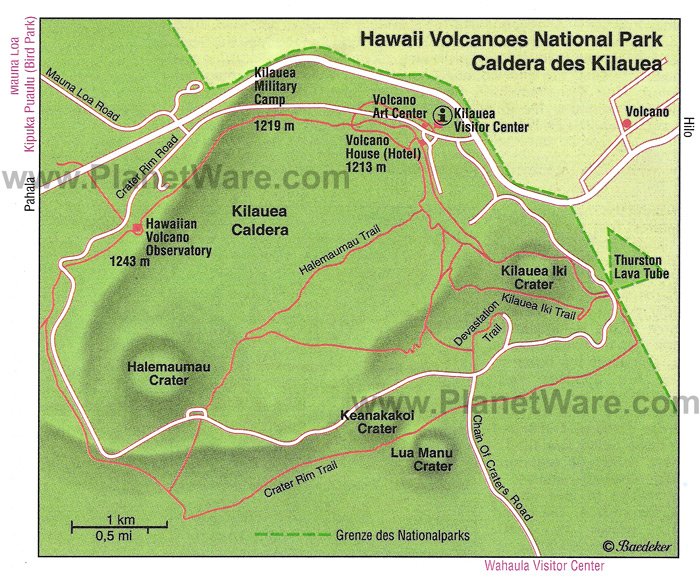
Doug had been in touch with Randy of the Pacific Seafarer’s Net and we were heading to Ocean View, where he lives, to have lunch with him and his wife, Lynn.
They have a lovely home which seems to naturally rise up from several acres of lava rock, garden, lava tubes and tunnels and has stunning views over land that slopes to the sea. In the distance, the ocean and the sky seem an endless expanse of blue. They run a very efficient bed and breakfast, with three bedrooms, called Leilani B & B. (http://leilanibedandbreakfast.com/)
After lunch at the local bakery, Randy showed us around his unique property and a tour of his radio workshop.
The technology he uses to participate in the Seafarer’s Net is very impressive and we knew we would be able to picture him there when we talk to him on the passage home.
We expressed our gratitude to him and his radio mates for their dedication to the Net. Those voices on the Net are like a lifeline to us when we are at sea. Thank you very much Randy, Jane, Tom, Russ and all the others who support the Seafarer’s Net each night. You are making a difference!
In the late afternoon we headed back to Hilo. We decided to check out the extreme south point of the island and followed a twisty, windy road through pastureland that gradually sloped down to the sea.
As we approached the water we saw an area of wind silos – some dilapidated and no longer serviceable, with more modern, working ones in the distance.
The road deteriorated into a potholed track as we approached the cliffs at the end. There were quite a few cars down there and we could see kids jumping off the cliffs and climbing back up rope ladders to do it again. The water was turquoise clear at the southern most point of the United States.
We continued along the pocked road which seemed to branch out all over the place. When we saw the foundations of old buildings we began to realize that the area must have once been some kind of military base. (We later found out it was a Pacific Missile Range Station that tracked missiles shot from California to the Marshall Islands). We reached the end of the road where there were many more parked cars whose occupants, we later learned, had hiked the 2km or so, to Green Sands Beach, coloured that way because of olivine sand that had eroded from an ancient volcanic cone nearby.
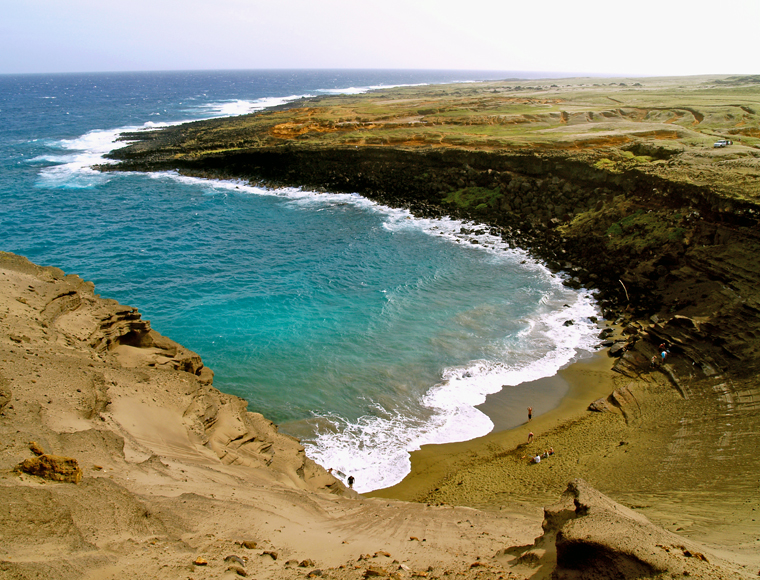
The day was getting on, so we turned around and retraced our steps, once more, to the highway.
A few miles further, we stopped at Punalu’u – a black sand beach that is apparently famous for basking green sea turtles. We didn’t see any turtles, but were amazed at how BLACK the beach is! There were quite a few local people here picnicking and fishing, as well as tourists strolling the beach.
Time was getting on and the rain was setting in, so after a brief look around we climbed back into the car for the last leg to Hilo. Through vog and rain, the landscape undulated from very bleak mountains of jagged black lava rock to lush, green, hilly pastureland.
We were happy to return to the snug cabin of Ka’sala and tip a glass to my sister whose birthday it was today!

An earlier eruption of Mauna Loa
The Hawai’ns believe that the goddess Pelehonuamea, affectionately called Pele, lives in the active Halema’uma’a Crater partway down Mauna Loa. When her temper or jealousy flares up, so do the eruptions and the consequent lava flows. There are many stories and legends surrounding these events which remind me of Greek mythology. Whatever the belief, beyond a doubt, this massive volcano is very impressive.
The goddess Pele
After paying $10.00 at the park gate we checked into the visitor centre.
We watched the films and the most surprising thing we learned was that the Hawai’in Archipelago is still growing. Acres of land are being created on the south end of the big island as the lava flows into the sea, cools and creates more mass. To the south of the big island, and under the sea, is another volcano – Lo’ihi - which is erupting and pushing its way to the surface. Someday it will become the newest Hawai’in island. Each of the islands in this archipelago has gone through this process and the shifting of the earth’s plates has moved them, like a conveyor belt, four inches a year to the northwest.
We returned to the car and continued along the Crater Rim Drive which circles the caldera. The air all around was very misty and was referred to as “vog” – volcanic fog filled with sulfer dioxide. Unfortunately for tourists, this vog has increased in its density in the last few years creating dangerous levels of gases and causing most of the area around the crater to be closed to the public. We were able to stop at the steam vents to see plumes of vapour pour out of fissures and cracks.
The steam rising up from this vent was hot - why are there no spas here?
Steam vents rose all across this field
We walked along a path to the rim of the crater and were able to see right across its expanse. What a sight! My heart rate was definitely high as I looked across this moonscape, imagining the power that lay just below the surface.
Blonde Pele at the side of the cliff - crater in the background
We continued on and stopped at a small outlook which showed the cliffs we had looked over by the steam vents. It was a pretty spooky feeling to know we were just feet from the edge.
From the steam vent viewing area
Looking back to the steam vent viewing area - we were very close to the edge
Further along we came to the Jagger Museum – a small interpretive centre – where we could read more about the volcano and the research it has garnered over the years. On a platform, outside of the building we could get a better look at the crater, but on the day we were there we could only see the smoke rising.
Apparently, if you came at night, you could see the glow of the lava in the smoke. Apparently there had not been an eruption for several months and the last one had been quite small. There was another little gift shop here.
Unfortunately for us, the road also ended here, closed because of the sulphur dioxide gases, and we were forced to retrace our tracks. No spewing rocks, towers of lava or flow for us! We tried to decide if it was a good or bad thing – especially after seeing the footage of eruptions and flow in the films at the visitor centre!
Another option for us was to continue our exploration of the park by driving down the Chain of Craters Road to the sea. This is a 36 mile round trip where, at the halfway point, lava has crossed the road, severing it from continuing on to the south westernmost communities of the big island. Alternatively, if we had brought our hiking shoes and a jacket (it was quite cool), we could have walked through a secondary crater called Kilauea Iki, or chosen from several other trails that wound around the area. We wanted to continue south to Ocean View, so decided to leave these options for another day.

Doug had been in touch with Randy of the Pacific Seafarer’s Net and we were heading to Ocean View, where he lives, to have lunch with him and his wife, Lynn.
Randy
Lava tube on Randy's amazing property
After lunch at the local bakery, Randy showed us around his unique property and a tour of his radio workshop.
In the late afternoon we headed back to Hilo. We decided to check out the extreme south point of the island and followed a twisty, windy road through pastureland that gradually sloped down to the sea.
The rugged most southern point in the US
These windmills always give me the science fiction creeps
The road deteriorated into a potholed track as we approached the cliffs at the end. There were quite a few cars down there and we could see kids jumping off the cliffs and climbing back up rope ladders to do it again. The water was turquoise clear at the southern most point of the United States.
Cliff diving in Hawaii
We continued along the pocked road which seemed to branch out all over the place. When we saw the foundations of old buildings we began to realize that the area must have once been some kind of military base. (We later found out it was a Pacific Missile Range Station that tracked missiles shot from California to the Marshall Islands). We reached the end of the road where there were many more parked cars whose occupants, we later learned, had hiked the 2km or so, to Green Sands Beach, coloured that way because of olivine sand that had eroded from an ancient volcanic cone nearby.

Green Sands Beach, South Point, Hawaii
The day was getting on, so we turned around and retraced our steps, once more, to the highway.
A few miles further, we stopped at Punalu’u – a black sand beach that is apparently famous for basking green sea turtles. We didn’t see any turtles, but were amazed at how BLACK the beach is! There were quite a few local people here picnicking and fishing, as well as tourists strolling the beach.
Now that's a black beach!
Black lava landscape
Happy Birthday, Darlene!
Subscribe to:
Posts (Atom)



























































